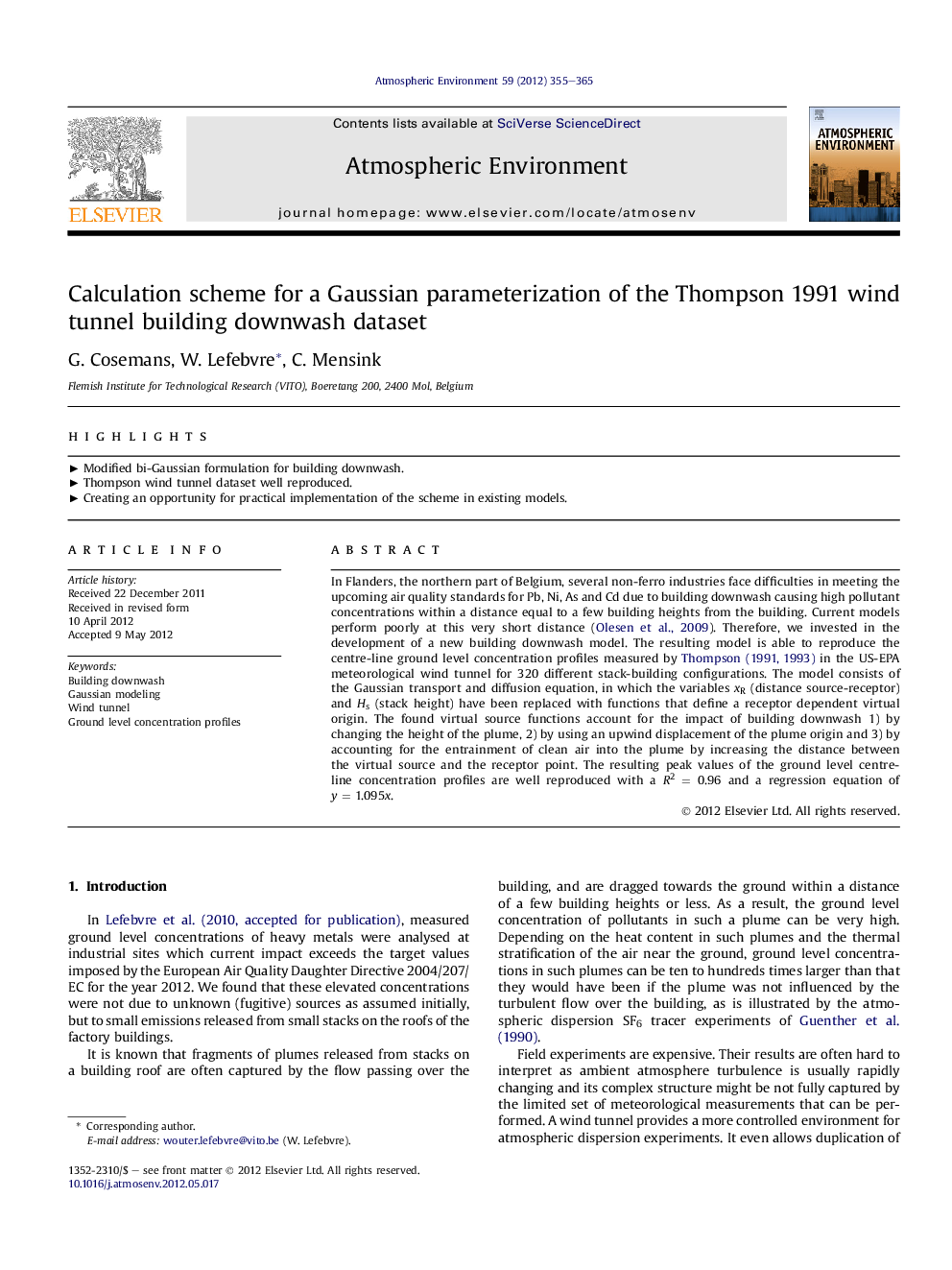| Article ID | Journal | Published Year | Pages | File Type |
|---|---|---|---|---|
| 6342383 | Atmospheric Environment | 2012 | 11 Pages |
In Flanders, the northern part of Belgium, several non-ferro industries face difficulties in meeting the upcoming air quality standards for Pb, Ni, As and Cd due to building downwash causing high pollutant concentrations within a distance equal to a few building heights from the building. Current models perform poorly at this very short distance (Olesen et al., 2009). Therefore, we invested in the development of a new building downwash model. The resulting model is able to reproduce the centre-line ground level concentration profiles measured by Thompson (1991, 1993) in the US-EPA meteorological wind tunnel for 320 different stack-building configurations. The model consists of the Gaussian transport and diffusion equation, in which the variables xR (distance source-receptor) and Hs (stack height) have been replaced with functions that define a receptor dependent virtual origin. The found virtual source functions account for the impact of building downwash 1) by changing the height of the plume, 2) by using an upwind displacement of the plume origin and 3) by accounting for the entrainment of clean air into the plume by increasing the distance between the virtual source and the receptor point. The resulting peak values of the ground level centre-line concentration profiles are well reproduced with a R2 = 0.96 and a regression equation of y = 1.095x.
⺠Modified bi-Gaussian formulation for building downwash. ⺠Thompson wind tunnel dataset well reproduced. ⺠Creating an opportunity for practical implementation of the scheme in existing models.
